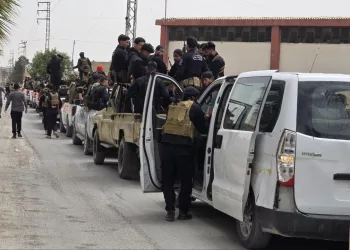Fresh anti-regime protests have hit south Syria, marking the most significant displays of public anger since 2011. Thousands of protestors have gathered and blocked roads while workers in Suwayda paralyzed major population centers for several days with an unprecedented labor strike. Since 16th August, following a sharp increase in fuel prices triggered by the removal of government subsidies, popular protests were reported in more than 52 locations in the south. Signs of open defiance against the regime and public anger are on the rise across all regions under regime control, and the ongoing protests represent a spontaneous groundswell of desperation and despair. The popular movement in south Syria is expected to continue, but it appears unlikely that protests will spread significantly beyond Daraa and Suwayda. However, it is striking that recent weeks have seen unprecedented outbursts by pro-regime figures, with some members of the Alawite community taking to social media to express their discontent with the regime in a demonstration of their widespread anger and frustration at current conditions.
Unrest Across South Syria
Demonstrations erupted late last week across the two southern provinces of Daraa and Suwayda, with at least 4,800 individuals participating in public protests. The protests are in large part a response to the surging price of goods and increasingly appalling living conditions across the country. At least 12 locations in Daraa and 30 in Suwayda have been affected so far, with demonstrators gathering in public locations and cutting off roads. Demonstrations also took place in Jaramana, a mixed Christian-Druze neighborhood in Damascus.
The demonstrations have raised several unifying demands, including the reduction of commodity prices, an anti-corruption campaign and a crackdown on the spiraling drug trade. The drug trade in particular is a sensitive issue in south Syria, where smuggling empowers local warlords and enables institutional disfunction. Graffiti has also appeared on walls calling for the downfall of the regime.
In the south, economic activity has ground to a halt because of labor strikes led by public transport drivers responding to the regime’s removal of fuel subsidies. Hundreds of workers have participated in these strikes, paralyzing local commerce and shuttering the operations of virtually all public buildings.
While local leaders and prominent members of armed groups in Suwayda have expressed support for the protests—chief among them Sheikh Hikmat al-Hajri, the spiritual leader of the Druze community, and Laith al-Balous from the Men of Dignity militia—the protests are indicative of a spontaneous groundswell of public anger among the civilian population. The movement is not being orchestrated by any outside actor but is an authentic grassroots movement driven by the population’s increasingly desperate living conditions.
Regime Response
It appears the regime has enabled a security plan in response to the protests. Heightened security infrastructure is anticipated to persist in major cities such as Damascus, Aleppo, Latakia and Homs for the foreseeable future. Police in Suwayda have also deployed hundreds of officers to secure government buildings and prevent the closure of the Damascus-Suwayda road by protesters on 17th August.
The regime’s public response and strategy will likely avoid using the military or identifiable security forces to violently confront protesters in order to avoid escalating the public anger and sparking further unrest. Officials will seek more subtle methods to weaken and undermine the movement, while using the state media’s monopoly on domestic information to minimize the scope of the demonstrations.
While the protests were initially triggered by the regime’s decision to raise fuel prices, authorities are entirely unable and unwilling to make the policy changes necessary to alleviate the economic suffering of the population. Even though public sector salaries were recently doubled, the prices of goods continued to skyrocket at an even faster rate over the same period, showing the depths of the regime’s corruption and economic mismanagement.
So far, the regime’s relatively cautious approach to the protests has not prevented outbursts of violence: in the early morning hours of 22nd August, regime forces reportedly clashed with demonstrators in Nawa, northern Daraa. It is likely that the regime will exploit the protests for its own gain in the international arena and will appeal for support from allies. Damascus will likely present the unrest to regional states and members of the Arab League as evidence that international sanctions against the Assad government are responsible for rapidly deteriorating finances, rather than being a result of rampant corruption and economic mismanagement by authorities.
Prospects for Future Mobilizations
The protests are expected to continue in their current form for the next several weeks and are even likely to expand modestly into new areas across Daraa and Suwayda. However, heightened security measures means people outside south Syria will likely be more hesitant to engage in public demonstrations. Activists across the country announced protests spanning all provinces for Friday, 25th August, leaving open the possibility for resurgent and widespread dissent.
Beyond the south, signs of public anger and open dissent against authorities are on the rise across regions under regime control, even in historically loyalist Alawi communities––as exemplified by a recent video posted by Ayman Fares, a pro-regime shabiha member, who accuses the Assad family of corruption and weakness. In another video that has circulated widely online, Majid Dawai, an Alawite from Latakia called for Assad to step down, saying: “The people of the coast are the ones who will remove you.”
Even if the current wave of unrest were to dissipate, the underlying drivers are only set to intensify in the coming period: the further devaluation of the Syrian pound is anticipated, along with a renewed surge of inflation.







